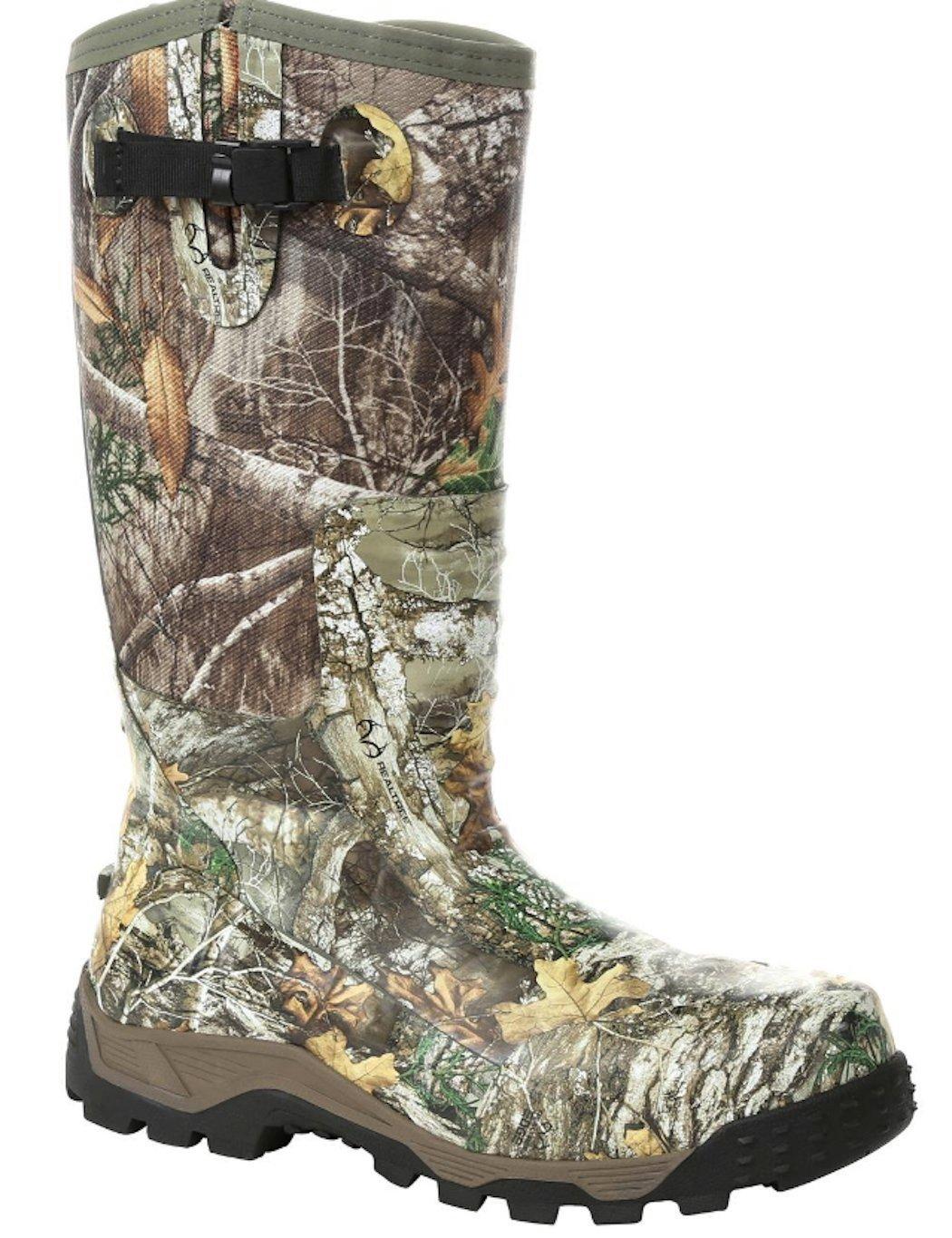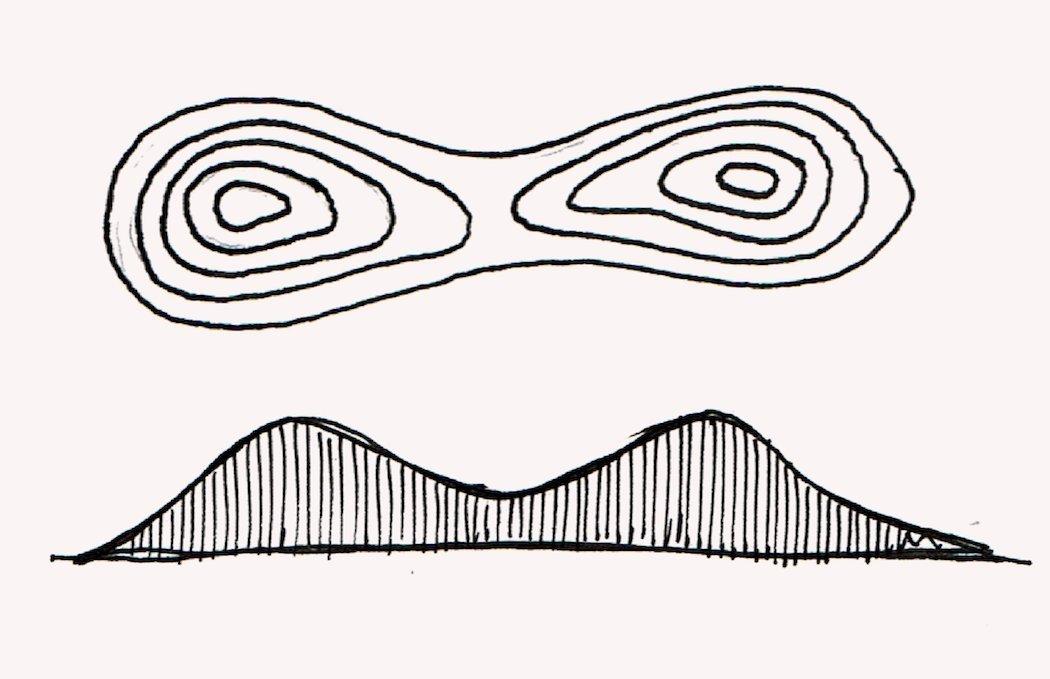What do those contour lines on a topo map mean? If you're a whitetail hunter, they can point the way to a filled tag
Whitetails that live in flat country are tough to kill. Without good terrain to conceal your approach, your quarry will bust you long before you get into range. That's why I prefer hunting ground with varied topography over land without elevation changes. Terrain gives deer a tactical advantage, but you can use it to your advantage, too.
So how do you know if a property offers the right mix of land features if you've never set foot on it? And how do you pinpoint the very best spots on expansive tracts? Start with a topographic map.
Topo 101
While topo maps might seem like a pile of spaghetti on paper, those squiggly lines do mean something. In general, tightly-packed lines with minimal spacing represent steep terrain, while lines with a lot of space between depict flatter ground with little or a gradual change in elevation. Small, tight circles (or rings) represent hills and peaks.
For hunters, the key is being able to visualize three-dimensional terrain while looking at a two-dimensional map. With that in mind, here are some of the best terrain features for deer hunting, how to recognize them and when to hunt them.
The Saddle
This feature is one of the classic hotspots for a deer stand. But there's a reason for that - saddles are whitetail magnets.
How to Recognize: A saddle looks like two bullseyes on a map that form a rough figure 8 shape.
Tactical Advantage: Deer generally travel the path of least resistance. In hill country, whitetails prefer to travel through saddles rather than over the tops of hills. They burn fewer calories that way. They also prefer to travel through more secure corridors rather than exposed peaks.
Best Time to Hunt: Saddles are travel routes, which makes them good options for any time of day. Definitely focus on them during the rut, especially if a particular saddle connects doe bedding areas. Hang a treestand on the downwind side and hunt daylight to dark.
The Side-Ridge Bench
These are prime deer travel routes. Deer love to bed here, too. These are typically located somewhere along the top half of hillsides and ridges.
How to Recognize: Look at different hillsides on your map. A bench is signified by a wide-set line with other tighter lines around it. Benches are elongated ovals or rectangles, and can be easy to spot if they're wide enough and your map has enough detail.
Tactical Advantage: Deer use benches as travel routes and bedding areas because they offer security. It's also fairly easy for you to slip in undetected and get close to bedded deer on them, too, as long as there's decent cover and a crosswind.
Best Time to Hunt: Benches are prime rut spots, though they can be good any time, especially from mid-October through the late season. For morning hunts, set up above the bench so the rising thermals carry your scent upward. For evening sits, post up in a tree below so the falling thermals take your scent down the hill and away from the bench.
The Hilltop
Deer like high ground because it offers the best vantage point. Learn to identify the highest points in your area, and plot the best ways to approach these tricky spots.
How to Recognize: Look for the smallest, tightest circles on the map. Remember: These won't always be perfectly round.
Tactical Advantage: If a hill provides good cover, deer typically bed along the top third or quarter of a hillside. Bigger deer will be found on the downwind side of the hill, since thermals bring scent up from the bottom and prevailing winds pull scent over from the backside of the ridge.
Best Time to Hunt: Hunt here any time during the season. Slip in well before daylight and get settled before deer come back to bed. You'll likely have to sit this spot all day to keep from bumping deer.
Maybe you could stand to lose a few pounds. Perhaps you have reduced mobility and big hills just aren't for you. No matter your limitations, you can still put topo maps to good use.
The Hub
A thermal hub is a dynamite spot. Deer migrate to these areas and use them heavily as travel routes. If the cover is thick enough, they'll bed there, too.
How to Recognize: Think about these as spokes on a wheel. All of the spokes run down toward the hub (at a lower elevation than the hills) between the ridges. Generally, the more ridges (i.e. spokes) that run down toward the hub, the better the odds of finding deer there.
Tactical Advantage: This terrain feature generally offers thicker cover, water and food. Winds from all directions typically pass through these areas.
Best Time to Hunt: Wind swirls in the bottomlands, so hunt here when you have strong directional winds or slip in for short morning hunts when thermals are rising rapidly.
Don't Miss: How Mature Bucks Use the Wind
The Gentle Slope
This area isn't as effective for hunting as the others on this list, but it still serves a purpose. Deer still use them. But good food sources or thick bedding cover are needed to make them more attractive to deer.
How to Recognize: In stark contrast with steeper terrain, slopes are represented by lines that are spread farther apart.
Tactical Advantage: Gently sloping hillsides don't offer much in the way of terrain tactics. However, they can still be hotspots if they offer superb bedding, food or cover.
Best Time to Hunt: This all depends on food, water and types of bedding cover - and topo maps won't help with that. Scout the area to learn more about it.
Plateaus
Don't overlook plateaus. They can be a gold mine with significant deer-habitat potential. Unfortunately, they're rare in most of whitetail country. But by definition, they're flat spots on the top of hills.
How to Recognize: Plateaus are common in coal country. Recognize them by their large, rounded rectangular or oval shape, filled with white space and surrounded by tightly spaced lines.
Tactical Advantage: Plateaus are usually rich with food and cover. In reclaimed mining areas, they likely have ponds, too.
Best Time to Hunt: Plateaus offer productive hunting all season long. For the best results, determine what food sources are available there, and hunt within their peak attraction window.
Ridge Ends
These are one of my favorite features in hill country. Just remember that the direction of the ridge-ending face is important, and so is hunting the right wind.
How to Recognize: This terrain feature is indicated by numerous tightly spaced contour lines that make sharp turns.
Tactical Advantage: Mature bucks typically face downwind while bedded. Their eyes cover their front and their noses guard their backs. They can see everything below and smell anything behind them.
Best Time to Hunt: Hunt ridge ends all season long. In general, north- and west-facing ridge endings are best when the weather is warm, and south- and east-facing ridges are best when the weather is cold. That said, remember the wind direction factor. If the ridge ending faces south, that spot will prove best with northerly winds. Deer should be bedded just over the crest on the downwind side. They'll be watching the bottom below.
The Hogback
These are more common in mountainous regions than hill country. But they still crop up from time to time. They have solid value if you scout and hunt them correctly.
How to Recognize: You'll notice a lot of peaks (small circles) in a row. There won't be much elevation change between peaks, but there will be massive drop-offs on either side that run parallel to the top of the hogback.
Tactical Advantage: Deer frequently bed at the tops of these. Hunting between the peaks (mini-saddles) is a surefire play.
Best Time to Hunt: These are great all season long. But they're even better once hunters start pressuring deer at lower elevations, causing deer to retreat to higher, harder-to-access territory.
Topo Boot Bonus

Nonetheless, it isn't easy on the feet. And that's why Rocky makes a boot tailor-made for this exact scenario — the Sport Pro Pull-On Rubber Snake Boot.
It comes in a medium width and men's sizes ranging from 8-15. It sports an aggressive multi-direction dual-density outsole, vulcanize rubber and a 5mm neoprene shaft. It also has a removeable PU footbed, steel shank, 16 inches of snake proof protection and comes in Realtree EDGE.
This model is priced right at $169.99.
Don't Miss: How to Kill Mountain Bucks
Check out more stories, videos and educational how-to's on deer hunting.












